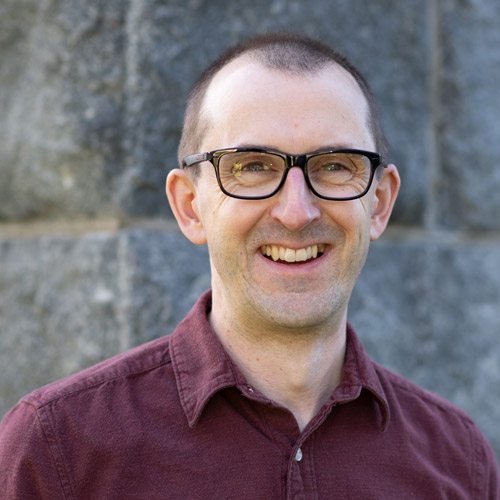How the National Science Foundation Is Advancing Computer and Information Science Research
Margaret Martonosi, head of NSF’s Directorate for Computer and Information Science and Engineering, to speak at BU on what the future holds for everything from computer development to artificial intelligence to funding new research

Margaret Martonosi, assistant director of NSF’s Directorate for Computer and Information Science and Engineering, says her field is “navigating a few key inflection points that are shaping how NSF approaches its priorities.” Photo courtesy of the National Science Foundation
How the National Science Foundation Is Advancing Computer and Information Science Research
Margaret Martonosi, head of NSF’s Directorate for Computer and Information Science and Engineering, to speak at BU on what the future holds for everything from computer development to artificial intelligence to funding new research
The latest phones, zippy new electric cars, even smart refrigerators—they’ve all been made possible by something called Moore’s law. First proposed by Intel cofounder Gordon Moore in 1965, it says manufacturers will be able to double the number of transistors in a circuit—allowing them to make computer chips that are faster and cheaper—every two years.
But Moore’s law, which has fueled tech industry growth and computing advances for decades, is about to break—the rate of development, many experts say, is no longer sustainable. According to some, the law may already be broken.
What does that mean, not just for our seemingly insatiable thirst for newer and faster gadgets, but for the cost of computing or for our chances of building more sustainable technology?
It’s one of three big questions that the US National Science Foundation’s Directorate for Computer and Information Science and Engineering (CISE) is grappling with, according to Margaret Martonosi, who leads the directorate. She calls these major shifts—the end of Moore’s law, the spread of artificial intelligence (AI), and the design of systems that advance, not harm, society—inflection points.
Martonosi is visiting Boston University to discuss how all of this change is shaping the directorate she helps lead. CISE supports fundamental research, education, and cyberinfrastructure advances with an annual budget of $1 billion. At BU, Martonosi will meet with early-career and senior faculty, NSF-supported students, and University leadership, as well as tour the soon-to-open Center for Computing & Data Sciences. Her talk, “The Computing and Information Science and Engineering Landscape: A Look Forward”—on September 12 at 3 pm at the Kilachand Center Colloquium Room, 610 Commonwealth Ave.—is free and open to the whole BU community. (You can register in advance.)
Ahead of her visit, The Brink spoke with Martonosi about CISE priorities, the future of NSF funding, and what it’ll take to diversify computing and data sciences.
Q&A
with Margaret Martonosi
The Brink: What are some of the NSF’s priorities in computing and data sciences—what are the challenges you’re trying to meet?
妈
The Brink: BU recently founded a stand-alone, University-wide, degree-granting computing and data sciences unit with researchers coming together across disciplines to solve big societal problems. Why is that sort of approach so important now?
妈
The Brink: Is that something that’s being reflected in how the NSF is managing its own organization and does it have implications for what it may fund in future?
妈
The Brink: Is that part of your message when you come to places like BU or the advice you give to researchers on how they’ll need to work with the NSF in future?
Martonosi: To some degree, I hope they don’t need to know—I hope we will put out solicitations that are interestingly broad and they can simply respond to them and, behind the scenes, we figure out which collection of dollars is going to fund the most meritorious of those proposals. I do always encourage, especially young faculty members, to reach out to program officers to have conversations, to get a sense of the best way to send in their proposal, just so that it doesn’t get categorized in a way that won’t optimize for success. The program officers are really good at knowing how to route things accordingly.
The Brink: Before we spoke, I asked Azer Bestavros, our inaugural associate provost for computing and data sciences, if he had any questions for you. He wanted to hear what CISE was doing to help tackle a brain drain of early- or mid-career researchers from academia to industry.
妈
The Brink: Computing and data sciences is a particularly white and male-dominated field. What steps are you taking to help diversify it?
妈
The Brink: Lastly, any message to BU community members to encourage them to come along and speak with you when you’re here?
Martonosi: I have done close to 80 virtual campus visits in 48 states—that’s how I went through the pandemic. One of the things that I really appreciated about those virtual visits was a chance to have conversations with a wide range of students and faculty in this broad set of what I would call the CISE-relevant topic areas, which goes way beyond computer science. Although this one is not virtual—this one is for real—I still would love to have that kind of conversational tone. If people want to come, bring their questions, bring their ideas, that would be great.
This conversation was edited for clarity and brevity.

Comments & Discussion
Boston University moderates comments to facilitate an informed, substantive, civil conversation. Abusive, profane, self-promotional, misleading, incoherent or off-topic comments will be rejected. Moderators are staffed during regular business hours (EST) and can only accept comments written in English. Statistics or facts must include a citation or a link to the citation.